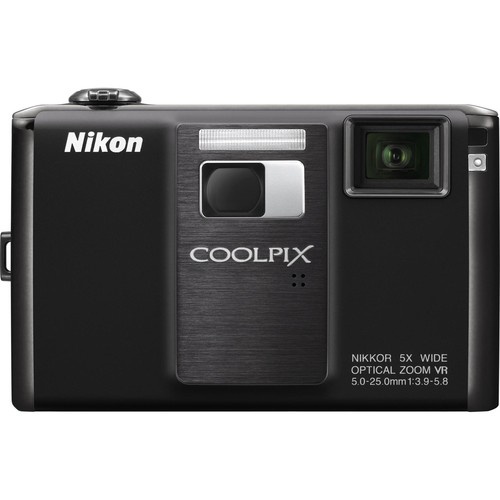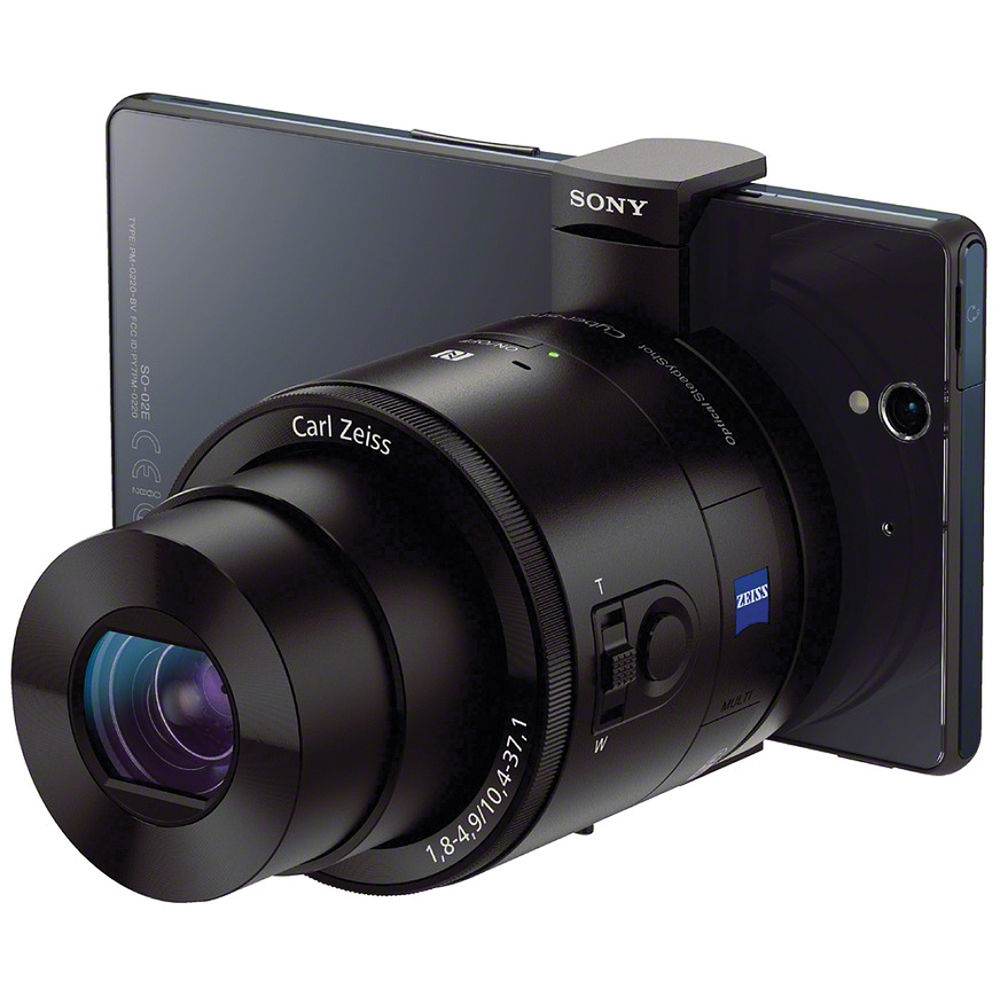5 Images Gimmicks That Went Nowhere
Each Few Years, Digicam Corporations Roll Out One thing Meant to Seize Consideration. One thing, These Concepts Flip Into Revolution: Autofocus, In-Physique Stabilization, and Mirrorless Mounts All Started As Dangers That Paid Off. However for each actual innovation, there is a graveyard of gimmicks – options and merchandise that sounded futuristic, received headlines, after which diad in obscurity. Listed below are 5 of the quirkiest gimmicks that promised to alter pictures however Went Nowhere.
These gimmicks inform us one thing concerning the time they have been born into. Some Got here from Chasing Cultural Fads, Just like the 3D Craze of the Early 2010s. Others have been the results of technological lifeless ends, when compans wager on codecs or workflows that appeared intelligent however collapse below higher options. A Few have been genuinely imaginative however merely impractical, highlighting the hole between what advertising groups wish to promote and what photographers really want. Trying again, they’re humorous, irritating, and surprisingly instructive.
3D Cameras: A Dimension No one Wished
The Early 2010s have been Drenhed in 3D Hype. James Cameron’s Avatar had simply revamped $ 2 billion worldwide, and each main electronics model scrambled to push 3d tvs into residing rooms. Digicam Makers, Determined To not Miss The Wave, Joined the Frenzy. Fujifilm Led the Cost with the FinePix Actual 3D W3, a compact with twin lenses that would seize stereoscopic stills and movies. The Advertising and marketing Lened Closely on Futurism: Think about Your Trip Pictures Popping Off the Display in Superb 3D, No Glasses Required Due to the Constructed-in Lenticular Show.
On paper, it was sensible. In Observe, it was clunky. The Digicam was bulkier than comparable compacts, the picture high quality wasn’t aggressive whenever you weren’t capturing 3D, and the whole sharing ecosystem was damaged. To view 3D Correctly, you want both one other W3, a specialised monitor, or a 3d TV that nearly No one Owned. Even then, the decision was low, the depth impact was inconsistent, and the entire course of felt extra like a tech demo than a usable workflow. What Fujifilm Bought because the Way forward for Images Rapidly Revealed Itself to Be An Awkward Detour.
The Downfall of 3D Cameras wasn’t nearly Fujifilm. Sony Dabbled with 3D Sweep Panorama Modes, and Panasonic Tried Its Hand with 3D Conversion Lenses for Micro 4 Thirds. None of them caught. The difficulty was cultural as a lot as technical: whereas 3d had a momentary buzz in theaters, customers didnot wish to relive their lives in stereoscopic kind. For on a regular basis pictures, like birthdays, holidays, and portraits, the additional dimension added extra problem than pleasure. As soon as 3D TVS TANKED, the whole Ecosystem Collapsed, Taking Cameras with it.
As we speak, The FinePix W3 is a Curiosity for Collectors and Retro Youtubers. It is Rebended Much less As a Severe Digicam and extra as an emblem of How Corporations Chase Developments. The irony is that depth-based imaging in discover a place later, not in customary 3d cameras however in computational portrait modes on smartphones. Apple and Google Sucteded the place Fujifilm Failed, however they’re by hiding the complexity and delivering a easy promise: background blur on the push of a button. The lesson of the w3 is that individuals don’t desire new dimensions until they add one thing apparent and simple.
Oddball storage codecs
Earlier than SD Playing cards Dominated, Storage for Digital Cameras Was a Chaotic Arms Race. Corporations Tored Every part: Compactflash, SmartMedia, XD Playing cards, Even Magnetic Storage. Sony, Well-known for its proprietary impulses, leaned on household codecs like floppies and cds in its mavica sequence. The Earliest Mavicas within the late ’90s used 3.5-inch floppy discs, letting you pop them straight right into a PC, which was genuinely helpful on the time. Later, Sony Rolled Out model that wrote to mini CD-RS, promising big storage will increase and common compatibility. A Few Experiments with Minidisc Additionally Surfaced, Tying into Sony’s Audio Ecosystem.
The pitch was intelligent: Use Media Folks Already Knew. In actuality, it was a logistics mesh. Floppies stuffed after fewer than 20 photographs at vga decision, and even these tour without end to jot down. The CD-based Fashions added bulk and shifting elements that sucked batteries dry, whereas minidisc was already struggling to discover a FOOTHOLD Outdoors Japan. In the meantime, flash reminiscence was getting cheaper, quicker, and extra compact yearly. By the mid-2000s, SD and Compactflash had complelely steamrolled these oddball codecs.
The odd storage expertise mirrored a deeper reality concerning the transition to digital: No one Knew What the Customary can be. Digicam Corporations Hedged Bets, Hoping to Lock Customers into Propritary Techniques. Sony, specifically, tried to increase its dominance with the codecs like reminiscence stick, which survived longer however nonetheless finally misplaced. Customers, Howver, Gravitated Towards Simplicity. They Did not Need to Juggle Fragile CDS or Purchase Overpriced Proprietary Playing cards. As soon as Compactflash and SD Emerged as Common, The Battle Was Over.
As we speak, Mavica Cameras and Minidisc Curios Pop Up on Ebay and Tiktok, Offen as Punchlines. Enthusians Purchase them for nostalgia or novelty, not critical use. But Their Failures Aren’T Meaningless. They present how early digital pictures wasn’t inevitable: it was messy, fragmented, and filled with experiments. Some Labored, Some Flopped. The graveyard of strange storage codecs stands as a reminder that the best options are Often Wins.
Constructed-in Projectors: The Get together Trick No one Used
In 2009, Nikon Unveiled the Coolpix S1000PJ, a compact digicam with a built-in pico projector. The pitch was irresistible for entrepreneurs: seize your images and immediately share them by projecting a slideshow on the closest wall. Industrial Confirmed Teams of Pals in Darkened Rooms Laughing As Their Pictures Got here to Life in Film-Theater Fashion. It was framed as a brand new social option to get pleasure from pictures, one thing extra communal than gazing a tiny liquid crystal display.
In actuality, the characteristic collapse below its ows impracticality. The Projector Was Dim, Requiring Close to Darkness to Be Seen. Picture high quality was muddy, the battery life evaporated after a brief session, and the novelty wore off quick. Worse, The Timing was Disastrous. By 2009, smartphones have been quickly turning into the dominant option to share images. Insead of Awkwardly Beaming a picture Onto a wall, Folks Simply Pulled Out Out Their Iphones and Passned Them Round. What Nikon Thought Was Futuristic Already Felt dated on Arrival.
 Nikon double down with follow-up just like the s1100pj and s1200pj, however the writing was on the wall. Fizzled Gross sales, and the Characteristic By no means Unfold to Different Traces. The IDEA of Mixing Projectors into Shopper Units had some cultural traction on the time, as Samsung had tried pico projectors in telephones, too, however it by no means solved an actual downside. The reality was that social photograph sharing had already gone digital, not bodily. Projectors have been preventing the fallacious battle.
Nikon double down with follow-up just like the s1100pj and s1200pj, however the writing was on the wall. Fizzled Gross sales, and the Characteristic By no means Unfold to Different Traces. The IDEA of Mixing Projectors into Shopper Units had some cultural traction on the time, as Samsung had tried pico projectors in telephones, too, however it by no means solved an actual downside. The reality was that social photograph sharing had already gone digital, not bodily. Projectors have been preventing the fallacious battle.
As we speak, Projector Compacts are Remeranted as One among Nikon’s Strangest Experiments. They’re Fascinating in Retrospect as a result of they present how determined producers have been to distinguish factors in an period when smartphones have been have been consuming their lunch. Flashy however impractical options was a last-ditching to avoid wasting a dying class. It Did not work, however it left behind probably the most memorable gimmicks in digicam historical past.
Wi-Fi Direct Printing Buttons: The One-Contact No one Touchad
Within the mid-2000s, digicam makeers assume the holy grail of comfort was printing. Moderately than Transferring recordsdata to a pc, you’d press a “print” button in your digicam and beam the shot on to a printer. Requirements Like Pictbridge and Wi-Fi Direct Had been Hyped because the Subsequent Large Step in Workflows. Cameras included literal devoted print buttons, promising one-touch magic. The dream was clear: shoot, press, and hand grandma a shiny photograph in seconds.
The truth was gradual and irritating. PRINTERS THAT Truly helps the requirements have been uncommon, Setup Was Clunky, and even when it labored, it Took Ages. By the point you lastly have a print, the spontaneity was gone. Worse, the cultural shift was shifting in the other way. Folks have been have been printing the images of Pictures, no more. Sharing Hoved On-line, First to Fb and Flickr, Later to Instagram and Tiktok. A button for direct printing Turned a button no one touchd.

The Deeper Drawback was that this wasn’t fixing the appropriate downside. What Customers Wished Was Fictionless Sharing, Not Awkward Printing. Smartphones nailed this late immedietly: snap a photograph, faucet share, and it was on-line for everybody. Cameras with print buttons utterly misjudged the course of tradition. Insead of Making Images Less complicated, they uncovered simply how disconnected producers have been from the way in which folks really used photographs.
By the early 2010s, print buttons quietly vanished. Most individuals do not even bear in mind they’re existed. They stand as proof that chasing “ease of use” does not imply a lot for those who’re fixing an issue folks do not even have.
Sony QX Lens-Fashion Cameras: The Awkward Hybrid
In 2013, Sony Unveiled Maybe the Strangest Try and Bridge Smartphones and Devoted Cameras: The QX Collection. The Sony QX10 and QX100 have been primarily lenses with sensors constructed inside that clipped onto your smartphone. The idea was radical: Pair your cellphone’s display screen and connectivity with actual optics and bigger sensors. The QX100 in Explicit Borrowed from the RX100, Promising Close to-Compt High quality in a Pocket-Sized Hybrid. For a short second, the tech press haled it as genius.
However utilizing it was a nightmare. The Wi-fi Connection Lagged, Pairing Off Failed, and Holding a Telephone with a Lens Dangling Off the Entrance Felt Precarious. Ergonomics have been atrocious, the app interface was gradual, and battery life was laughable. Even when the qx100 delivered good recordsdata, the friction of getting them was sufficient to kill the enjoyment. Smartphones have been evolving so quick that inside a couple of years, their built-in digicam was ok to rival what the qx promised, with out the effort.
 The QX Experiment was daring however misguided. It assumed folks wish to bolt additional gear onto their telephones when, in actuality, the entire attraction of a cellphone is that it is self-contained. Intead of Making Images Simpler, The QX Made It Awkward. Sony Quietly discontinued the road, shifting on to strengthen its rx and alpha ranges, which have been higher suited to aggressive on their very own phrases.
The QX Experiment was daring however misguided. It assumed folks wish to bolt additional gear onto their telephones when, in actuality, the entire attraction of a cellphone is that it is self-contained. Intead of Making Images Simpler, The QX Made It Awkward. Sony Quietly discontinued the road, shifting on to strengthen its rx and alpha ranges, which have been higher suited to aggressive on their very own phrases.
As we speak, The QX is Remediered as Each Bizarre and Fascinating. It reveals that even when compans have sensible engineering, they’ll nonetheless misjudge consumer conduct. The smartphone-camera hole was by no means going to be solved by hybrids. Inside, it was solved by the relentless progress of cellphone cameras area. The QX stands as a logo of that transition: intelligent, formidable, however in the end out of date earlier than it even had an opportunity.
Conclusion: Innovation or Gimmick?
Every of those gimmicks promised a Future that by no means Arrived. It is simple to Giggle at them now, however they Reveal One thing Essential: Digicam Makers Do not Fail Becaause They Lack Creativeness. They fail when their creativeness is not aligned with how folks really use digicam. Gimmicks aren’t nearly dangerous engineering they’re about dangerous assumptions. And Whereas These Merchandise Went Nowhere, They Nonetheless Matter, As a result of They Remind Us That Innovation is Messy, Dangerous, and Filled with Useless Ends. Each failed gimmick leaves behind classes that form the successs that observe.
Hyperlink: https://fstoppers.com/historic/5-photography-gimmicks-went-nowhere-711938?utm_source=FS_RSS&utm_medium=RSS&utm_campaign=Main_RSS